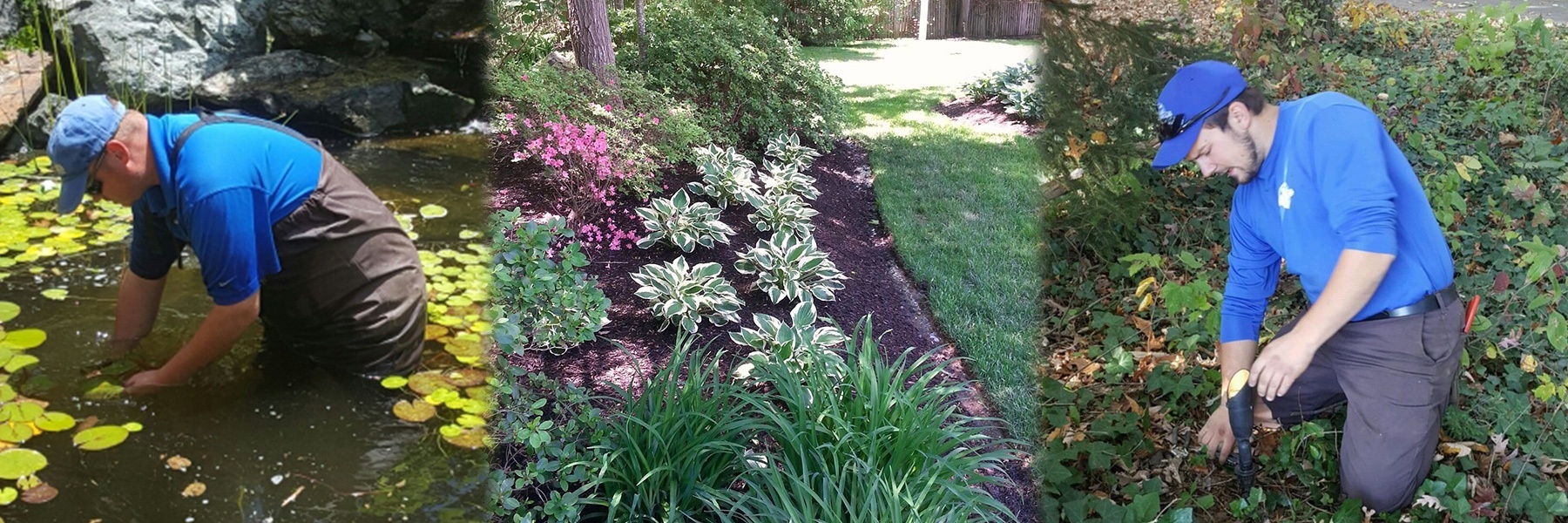We often get phone calls from customer making one simple statement; “I think my pond leaking.” If you have made this call to Damascus Enterprises, then you have either heard or seen this process done before.
Before you Suspect a Leak
If your pond is losing water slowly over time, say an inch every day or every few days, depending on how big your pond is, it could be evaporation. Water is naturally evaporating from your pond every day. How quickly it evaporates is largely dependent on how much water is being circulated through the water feature each hour.

Your pump will be rated for a certain GPH, so that’s your starting number. Finding an accurate estimate of GPH includes factoring in the resistance of the plumbing friction and gravity working against the pump.
Inspect the Pond Edge
The first thing we are going to ask you to do is to look for a low edge around your pond. A low edge can be cause by many factors. Usually, a low edge is more common on newer ponds. As the ground settles over time the liner edge settles with it and therefore may allow the water to leave the pond.
Fill up the Pond
If you have walked around your pond, whether or not your find a low edge, the next step is to fill your pond up to it normal level. Unplug the pump and mark the water level by marking a line on a rock with a brightly colored crayon and let your pond sit for a minimum of 24 hours. After 24 hours check your pond’s water level. Measure how many inches of water has been lost, if any. If there has been no water loss in 24 hours then it’s safe to say the leak does not exist in the liner of the pond or in the face-plate for the skimmer. If the pond has lost water over a 24 hour period measure how many inches it has dropped from your original line. Continue to mark the water level every 24 hours until it stops losing water or the water level has become unsafe for the fish. The level at which the water stops dropping will reveal the elevation of the leak. Water dropping down to the bottom of the skimmer opening and then stopping indicates a bad skimmer face-plate. After dropping below the skimmer the water level will suggest a rip, tear, or hole in the liner.

Fixing a Leak
With our investigative methods covered, it’s time to narrow down on the leak and enact a solution that will fix the leak permanently. In some cases the pond liner can be patched if the hole or tear is small enough and if it can be found. Over time the screws attaching the face-plate will corrode and the silicone seal, especially if improperly installed, can begin to leak. This type of leak can be difficult to find. However, if the leak is fast enough you will find a soggy area of soil around the front of the biofalls or front of the skimmer. It is usually necessary to excavate around the face-plates in order to confirm a leak.








